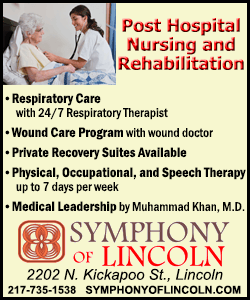|
 I too stand among that number; guilty as charged.
The difference, however, is found when you look into the
specifics—the details—that follow the well-worn promise. All too
often we see that the promise of infrastructure improvements is just
an election year pledge that stands alone, absent any real
connection to remedying current problems or addressing strategic
concerns. The U.S. is in need of a long-range strategic plan for
infrastructure development that can address current problems and
anticipate the needs of the next generation in commerce and transit. I too stand among that number; guilty as charged.
The difference, however, is found when you look into the
specifics—the details—that follow the well-worn promise. All too
often we see that the promise of infrastructure improvements is just
an election year pledge that stands alone, absent any real
connection to remedying current problems or addressing strategic
concerns. The U.S. is in need of a long-range strategic plan for
infrastructure development that can address current problems and
anticipate the needs of the next generation in commerce and transit.
Estimates of the current U.S. population hover at about 320 million
and that number is expected to reach 400 million within the next
thirty-five years. When we consider the typical project life span of
taking a transportation project forward from its innovative germ
stage to environmental scans to its ultimate completion, the time is
now to begin the work of designing and developing the highway
infrastructure that will be needed by the middle of the twenty-first
century. Although a significant part of this effort will require
additional construction, much of the work will involve redesigning
and reconfiguring existing roadways and bridges to handle the
increase in capacity that will be anticipated by mid-century.
 I would propose that we initiate an immediate study across the
country of all locations on our existing interstate highway system
that are traffic nodes—that is, areas where three interstate
highways come together within a ten mile radius. These are the
potential bottlenecks that must be addressed first if we are to
create an infrastructure network that can support commerce and
transit needs that we anticipate by mid-century. We should begin to
collect data at each of these nodes to address the functionality of
the existing system with its present capacity requirements, and this
will allow us to make projections about the long-range functionality
of the existing design. Where it is deemed necessary, new
construction projects must be anticipated and funded so that the
engine of the American economy does not falter.
In addition to considering the merits of highway construction
projects, we must also look into other aspects of infrastructure
development that can accommodate anticipated need in the coming
generation. I believe that it is worth considering the merits of
commuter rail systems that might connect mid-sized cities like
several that exist here in the IL-18th district. In addition to the
efficiency and long-range energy savings that such a system might
provide, it also includes an improved quality-of-life metric for
those who currently experience a long commute each day just getting
to and from work. In addition, it is imperative that we invest in
river lock and dam improvements as part of a comprehensive
infrastructure program that focuses upon the anticipated carrying
capacity of our current antiquated river control structures. [to
top of second column] |
 Few politicians ever think beyond the timespan of
election cycles, so it is sometimes difficult to get members of the
U.S. Congress to agree to serious long-term strategic planning that
is needed to prepare for mid-century commerce and transit needs. The
approach that we take must be multifaceted, and we must not let it
be degraded to the piecemeal approach of old-fashioned pork-barrel
politics. We must make wise, data-driven choices in where we choose
to invest our infrastructure resources, and we must strive to get
the greatest efficiency out of our efforts. Rather than measuring
the success or failure of such projects only in relation to
short-term job creation, we must look more strategically of how the
decisions that we make today can well influence the carrying
capacity of the American economy well into mid-century and beyond.
This requires visionary leadership on the part of our elected
officials and the willingness to prioritize national needs ahead of
any regional or partisan agenda.
Past related
articles
[Text from file received]

 |